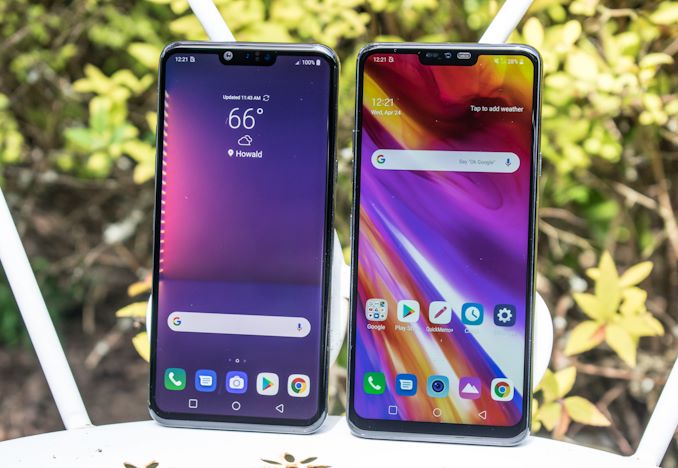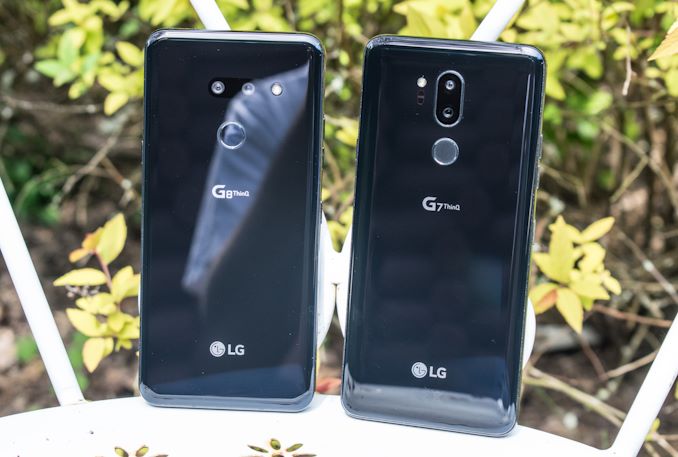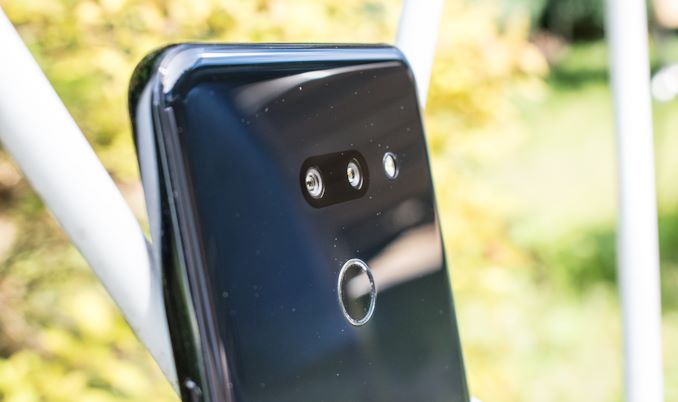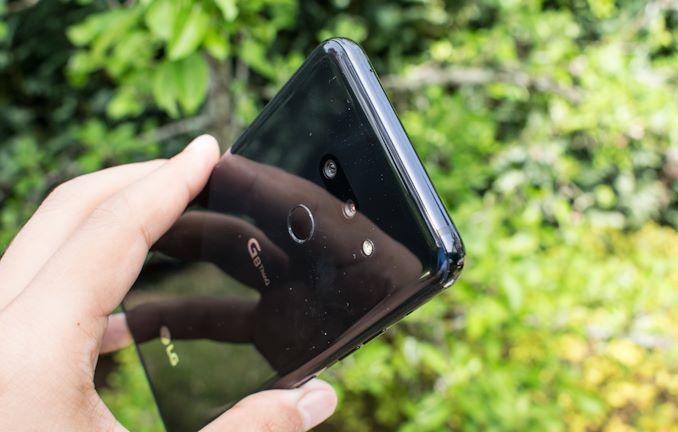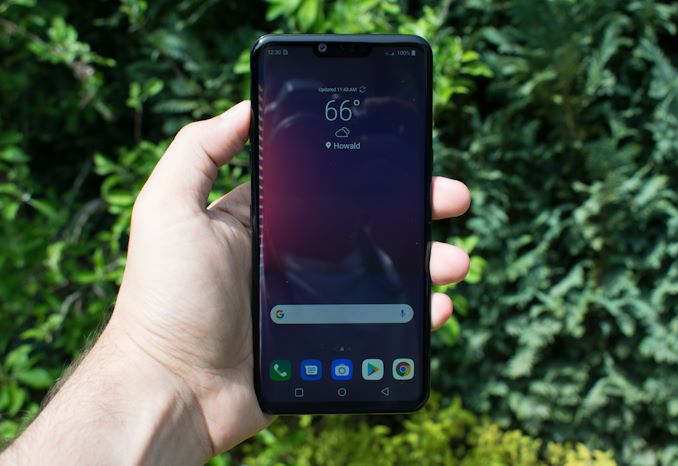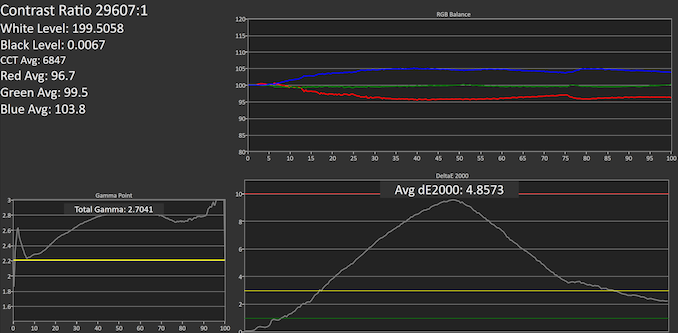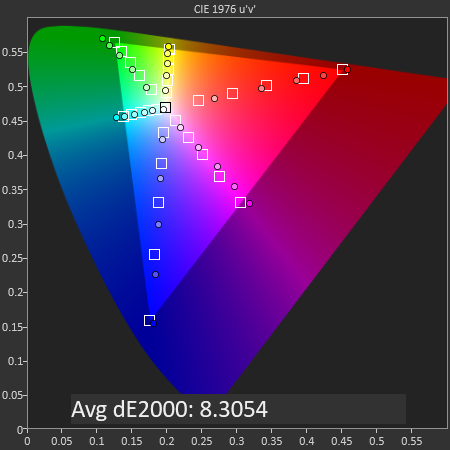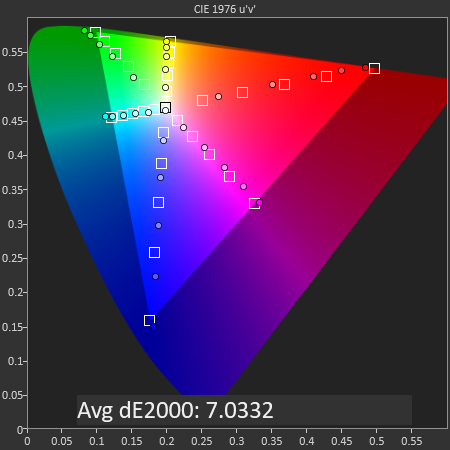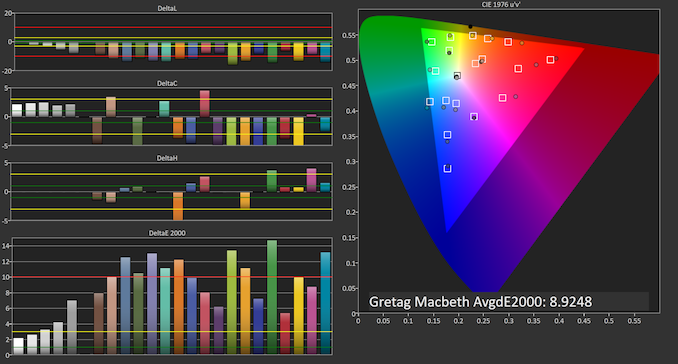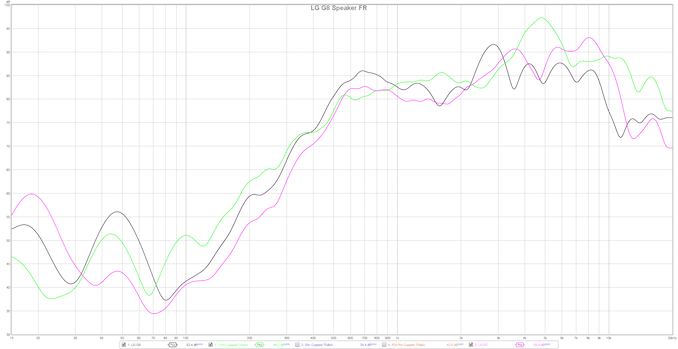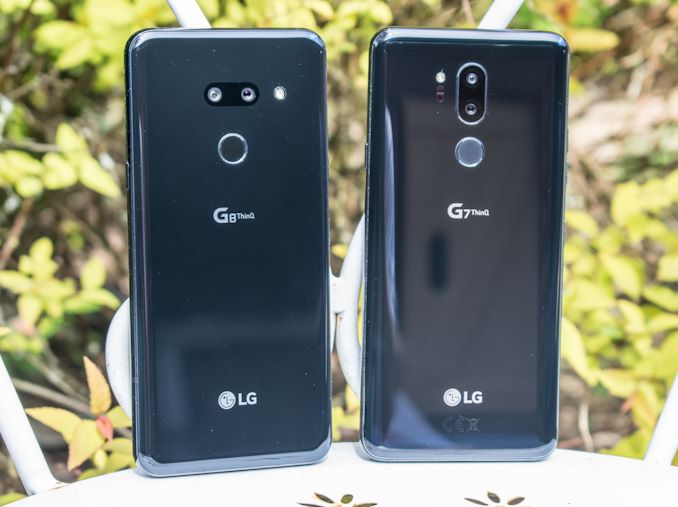
Original Link: https://www.anandtech.com/show/14166/the-lg-g8-review
The LG G8 Review: Solid, But Not Great
by Andrei Frumusanu on April 30, 2019 1:00 PM EST- Posted in
- LG
- Smartphones
- Mobile
- LG G8
- LG G8 ThinQ
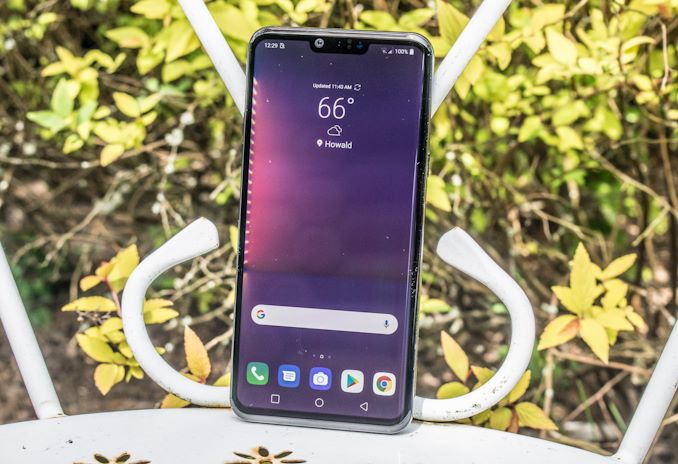
Only a few years ago LG was largely considered one of the top smartphone brands, competing alongside Samsung and the likes of HTC for marketshare. In the last few years however, LG has had quite a bit of a rough time, unable to deliver differentiating products and sometimes failing to deliver on some important basics in a smartphone. The result is dwindling marketshare numbers and less than stellar financial reports.
Today, the new LG G8 ThinQ is the newest iteration in LG’s line-up, bringing the newest technologies to the table and improving on last year’s model. One important thing to note about the G8 is that LG is no longer positioning the phone as the company’s flagship product, a position which now officially belongs to the V-series such as the upcoming V50.
The G8 thus doesn’t try to be revolutionary, and instead focuses on improving on some of the core aspects of what makes it a smartphone, with some gimmicks thrown in in an attempt to differentiate itself. Arguably, the most important distinction for the G8 is that this is the first phone in the series that comes with an OLED screen which represents a major shift in terms of LG’s past product segmentation between the G and V series.
| LG G8 ThinkQ | |||
| LG G8 | |||
| SoC | Qualcomm Snapdragon 855 1x Kryo 485 (Cortex-A76) @ 2.84GHz 3x Kryo 485 (Cortex-A76) @ 2.42GHz 4x Kryo 485 (Cortex-A55) @ 1.80GHz Adreno 640 @ 585MHz |
||
| Display | 6.1" OLED 3120 x 1440 (19.5:9) |
||
| DRAM | 6GB LPDDR4X | ||
| Storage | 128 GB | ||
| Dimensions | 151.9 x 71.8 x 8.4mm | ||
| Weight | 167g | ||
| Battery Capacity | 3500mAh | ||
| Wireless Charging | Qi | ||
| Rear Cameras | |||
| Main | 12MP 1.4µm Dual Pixel PDAF f/1.5 OIS 27mm eq. (78°) angle |
||
| Wide | 16MP 1.0µm f/1.9 Fixed Focus 16mm eq. (107°) angle |
||
| Front Camera | 8MP 1.22µm | ||
| I/O | USB-C 3.5mm headphone jack |
||
| Wireless (local) | 802.11ac Wave 2 Wi-Fi 2x2 MIMO Bluetooth 5.0 LE |
||
|
|
|||
| Dual-SIM | Single-SIM / Dual-Hybrid depending on market | ||
| Launch Price | $619 - $849 depending on carrier & variant | ||
In terms of hardware, the new LG G8 ThinQ ticks the marks in terms of offering the newest 2019 components, including the new Qualcomm Snapdragon 855 SoC. As seen in our Galaxy S10 review, the new SoC offers excellent performance and power efficiency and we’re expecting no less of the new G8.
LG makes the memory and storage options choice simple: The G8 only comes with a 6GB RAM and 128GB NAND (UFS 2.1) storage variant and avoids any up-sell models, instead relying on the microSD capability for more storage. Last year’s G7 also came with a 64GB storage option, which I would have argued might not have been sufficient for everybody, but the new 128GB base option should satisfy the vast majority of users, bar video-recording power users.
Pitting the new LG G8 against last year’s G7, we see very similar designs, yet the new model’s design is more refined:
LG has opted to continue to use a display notch for the G8, however this year the company has replaced the earpiece with a new time-of-flight (ToF) sensor. LG uses the ToF sensor in a unique way, enabling Minority Report-like navigatiion and controlgestures when hovering your hand in front of the screen, including an option to unlock your phone via hand vein recognition.
The biggest change between the G7 and G8 is something that from a distance isn’t immediately visible: the display panel technology. The display shares the same 6.1” 3120 x 1440 resolution and 19.5:9 characteristics of its predecessor, however this is now an OLED panel instead of last year’s RGBW LCD screen.
As mentioned, this is the very first OLED phone in LG’s G-series, a feature that in the past was dedicated to distinct series (Flex lineup) or the newer V-series models. This had me worried for the G8 as LG’s history with mobile OLED screens has been quite tainted: The Flex series’ screens were grainy disasters, while subsequent devices such as the V30 had large manufacturing variations which resulted in visible unevenness in the screen. Last year’s V40 had good display characteristics, however the phone was tainted by abysmal power consumption which I ended up attributing to the display panel, as we saw similar degradation in other manufacturers’ phones who opted to use LG displays. This latter issue however was found on the LCD G7 – largely eliminating the RGBW display's power efficiency benefits at lower brightness levels.
Given the company's history with mobile OLED screen, it’ll be incredibly important for LG to get the G8 display right, as it will be a determining factor as the centre-piece of the phone, as well as a major factor for the phone’s battery life.
The G8 shares the same form-factor as its predecessor, and the back of the phones are similar glass slabs. LG has opted to continue to use a rear capacitive fingerprint sensor which still works excellently. While LG could have opted to use an optical front under-screen sensor, it’s not a major negative for the phone in my opinion.
What isn’t directly visible in the comparison shots is another internal design change: The new G8 increases the battery capacity from 3000mAh on the G7 to a new 3500mAh capacity module, representing a 16% increase. This was a major concern for the G7 which had reduced its capacity from the 3300mAh of the G6, so it’s good to see LG recoup that difference and add on to it.
The battery increase however didn’t come without compromises as the new phone is now slightly thicker at 8.4 versus last year’s 7.9mm. It’s not an issue for the ergonomics, as the phone remains of a smaller form-factor at 71.8mm width. The increase however is immediately noticeable, especially because LG has opted to reduce the curvature of the back glass, more noticeably thickening the edges of the new phone, even when accounting for the new curvature of the front display glass. Again, it’s not an issue for me, but it does feel less premium as other new more streamlined designs by the competition.
The biggest design change of the G8 is in the camera orientation and housing. It seems that the increased thickness of the new phone has allowed LG to make the cameras flush with the back glass. In fact, the back glass serves as the glass protection for the cameras. In terms of design, this does look great and represents a unique feature that we haven’t seen in smartphones in several years now (Pixel 1 if I'm not mistaken). It’s to be noted that this flush design is interrupted by the LED flash which does have a cut-out in the glass, and naturally also the fingerprint sensor.
While the new design looks great, I have concerns about reliability: Because the back glass serves as the protection for the camera, it means that the cameras will be just as prone to scratches as the rest of the phone as it doesn’t have a protective raised physical barrier (metal rim) or recessed harder dedicated glass from the rest of the phone. Minor scratches might not appear in camera shots other than light artefacts in low-light, however let’s hope users don’t get any major scratches directly in front of the camera modules.
In terms of the cameras themselves, LG is doing some odd regional model segmentations. The G8 at MWC was presented as a triple-camera phone with dual-camera models for specific regions. In the end, the triple-camera variant seems to have ended up only in Korea as the US and Europe are seemingly getting the dual-camera variants, such as our review model. This is actually quite the competitive disadvantage for the G8, especially in the face of Samsung and Huawei’s newest triple-camera flagships. What’s more odd is that the Korean G8 with the triple camera setup doesn’t look to compromise anywhere else in terms of its specifications, and still comes in with similar full MSRPs. I just wish LG had gone with the full camera setup globally.
The wide angle sensor seems to remain the same as on the G7, a 16MP 1µm sensor with an f/1.9 107° wide-angle lens. The main sensor is where we see LG make big changes compared to the G7, as the new phone comes with the same 12MP 1.4µm sensor and f/1.5 78° main camera lens with OIS first introduced in the V40.
On the left side of the phone we find the two volume buttons as well as a dedicated button for Google Assistant. On the right side we find the power button as well as a wide SIM/microSD tray. It’s to be noted that in some markets the phone comes in a dual-SIM variant with a hybrid SIM/µSD slot as the second slot.
In regards to the speaker, we mentioned that LG had opted to remove the earpiece, but this doesn’t mean that the phone is limited to the bottom speaker. Under the display at about the level underneath the rear cameras we find a new piezoelectric exciter which vibrates the screen assembly, which in turn serves as a speaker. LG’s implementation surprisingly enough is quite good, although not as great as a dedicated powerful earpiece speaker. More importantly, the new under-screen speaker also now serves as a second speaker for stereo playback, which is a massive improvement over last year’s mono G7.
Overall, the G8’s new design isn’t anything ground-breaking. LG has made good functional improvements to the G7’s design while remaining true to it. It’s actually weird that I don’t have too much to say about the phone’s design, and if I had to critique anything about is that it does seem very conservative than some of the newer, more exciting competition.
System Performance
For system performance, we saw the Snapdragon 855 in the Galaxy S10 perform excellently, and there shouldn’t be any reason for the G8 to perform differently. It’s to be noted that the G8 is only our second Snapdragon 855 device we’ve received so the only comparison point we have is the Snapdragon variant of the S10.
Unfortunately, it looks like LG using an older version of the 855 BSP which is lacking some optimisations or lacking some configuration options which improve performance. Among the lacking features is the lack of boost mechanism for the top-app process groups, meaning the scheduler will be less aggressive than what we find on the Galaxy S10.
Let’s see how these differences end up affecting the G8’s performance:
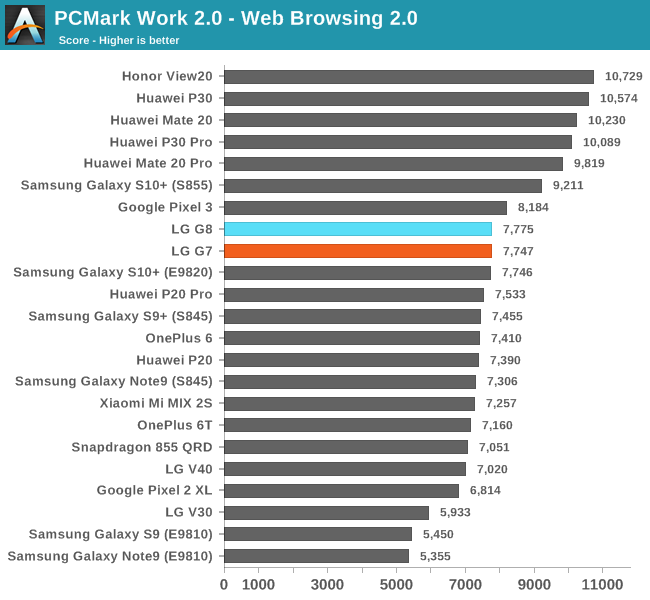
In PCMark’s web-browsing test, the difference ends up as quite major between the G8 and S10 as the former largely lags behind Samsung’s flagship, ending up with scores similar to the G7. The performance here reminds us of the initial benchmark scores from Qualcomm’s QRD855 reference platform in January, which also lacked some scheduler optimisations were commonplace in many of last year's Snapdragon 845 devices.
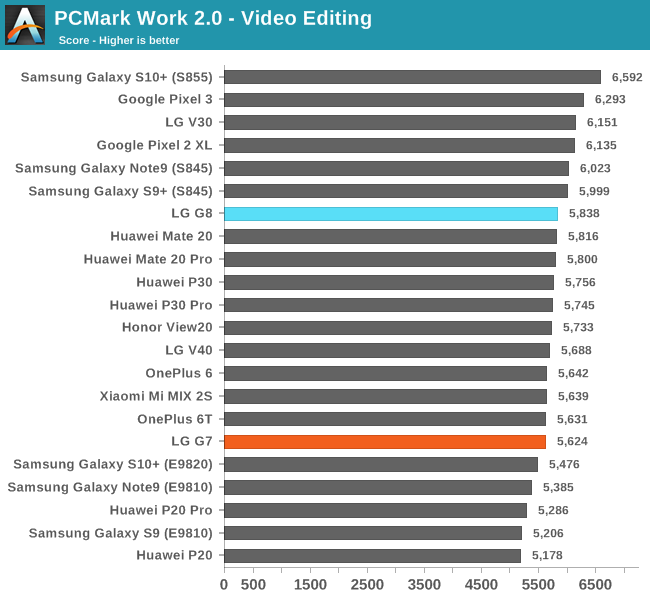
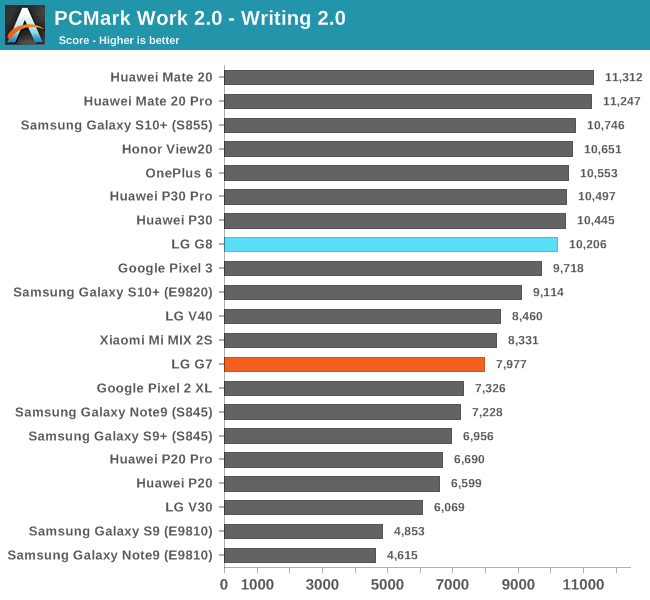
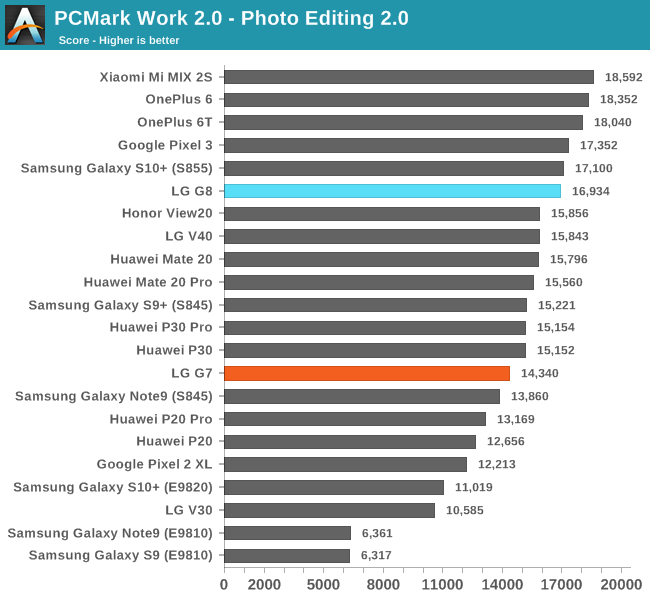
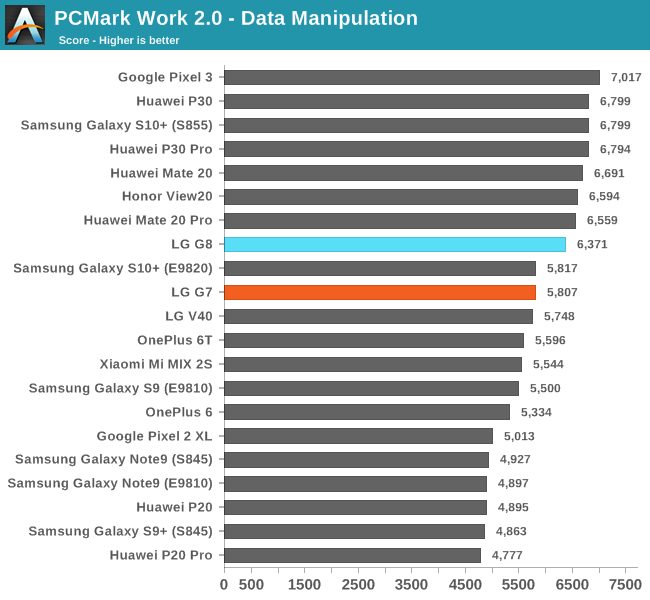
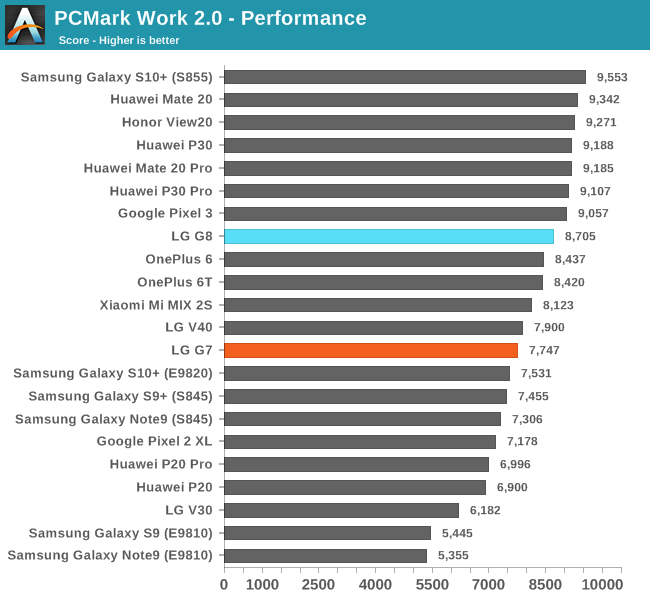
In the subsequent tests and final PCMark performance score we see the LG G8 lag behind the Galaxy S10, again scoring similarly to the QRD platform.
JS Benchmarks
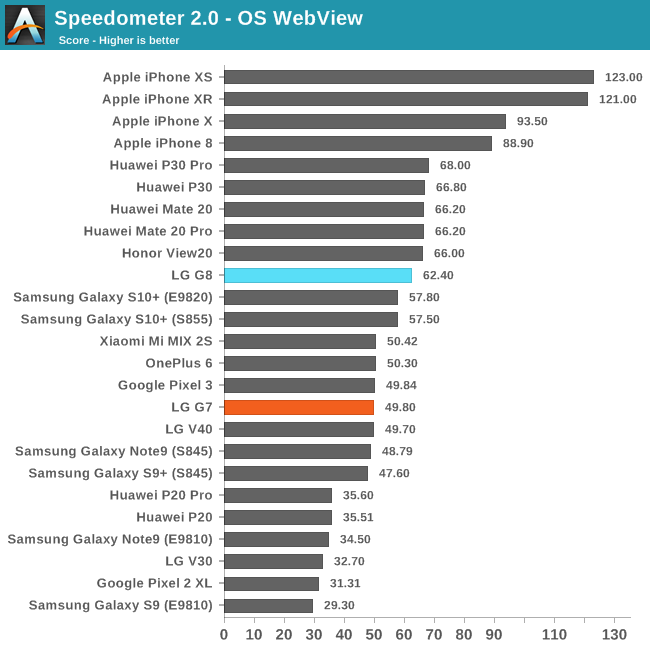
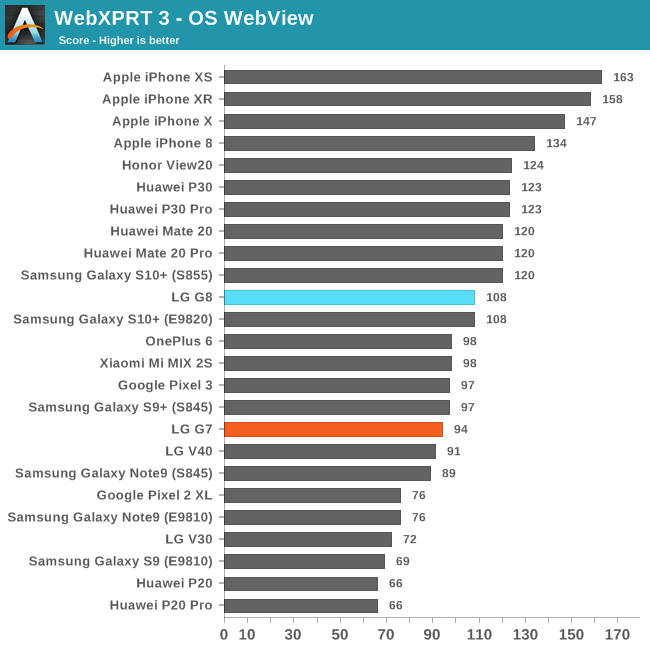
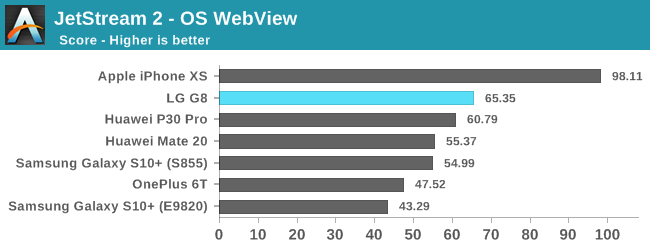
Since our review of the Galaxy S10 it seems Google has updated the system WebView to a newer version which has had a notable impact on performance, improving things by several performance points compared to a few months ago. We haven’t had the opportunity yet to update our database with the newest figures, which is why in some benchmarks the new G8 scores better than some previously reviewed devices.
In WebXPRT on the other hand we see the less aggressive scheduler settings overshadow the new WebView improvements, and the G8 again end up with worse performance than the Galaxy S10.
System performance verdict
Overall, I’ve actually been quite disappointed with the performance of the G8, even though the benchmarks rank it relatively highly among Android phones. The core issue here I think is software as seemingly the G8 is lacking some of the framework boosters and more aggressive scheduler settings found in competing devices.
Where this is most noticeable is when switching between applications or something as simple as browsing different views in applications. Here the G8 is not only noticeable slower as the new Galaxy S10 in both SoC variants, but it’s also noticeably slower than many of last year’s Snapdragon 855 devices.
What is most shocking however is the fact that the G8 feels slower than the G7. In side-by-side comparisons between the two phones, the G8 is slower in opening a lot of applications or in-app views. This is extremely disappointing and clearly points out that LG has messed up somewhere in terms of the SoC’s BSP integration.
We hope LG will address this in the future with a firmware update, however users shouldn’t be holding their breath on the matter.
GPU Performance
GPU and gaming performance of the G8 is something that is dictated by both the SoC as well as the phone's overall hardware design, specifically its thermal dissipation design.
We saw the Snapdragon 855 perform very well in the Galaxy S10, although the absolute improvements compared to the previous generation were quite conservative. Here the new LG G8 could distinguish itself by showcasing different thermal characteristics and possibly better sustained performance figures.
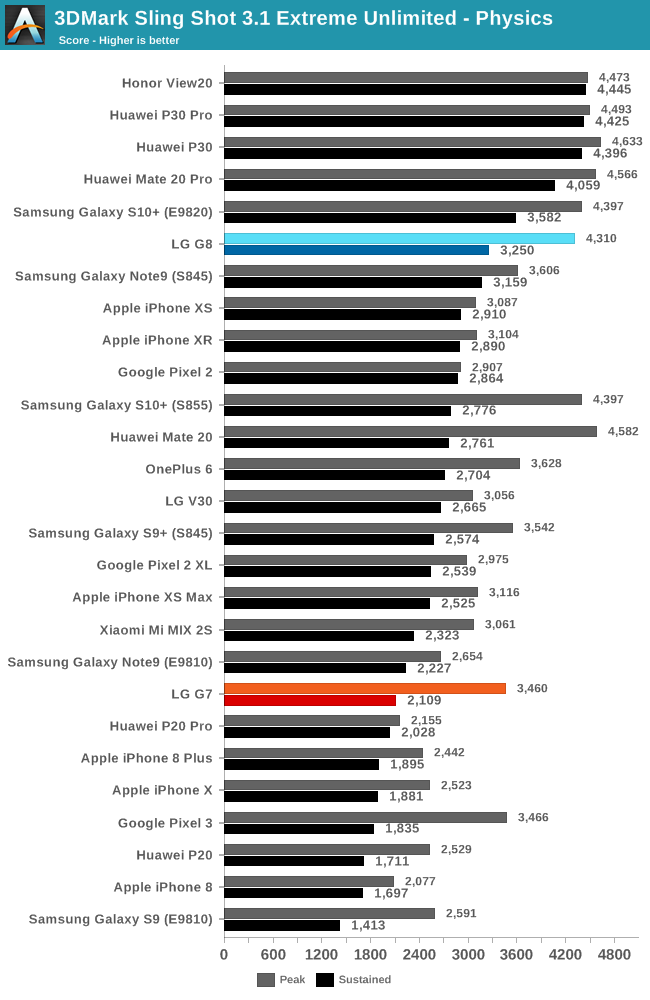
In the 3DMark Physics test which is mostly a CPU-bound workload within a GPU power constrained scenario, we indeed see the G8 performing better than the Galaxy S10+, which is a promising start. Huawei’s Kirin 980 phones here still lead the pack in terms of both peak as well as sustained performance.
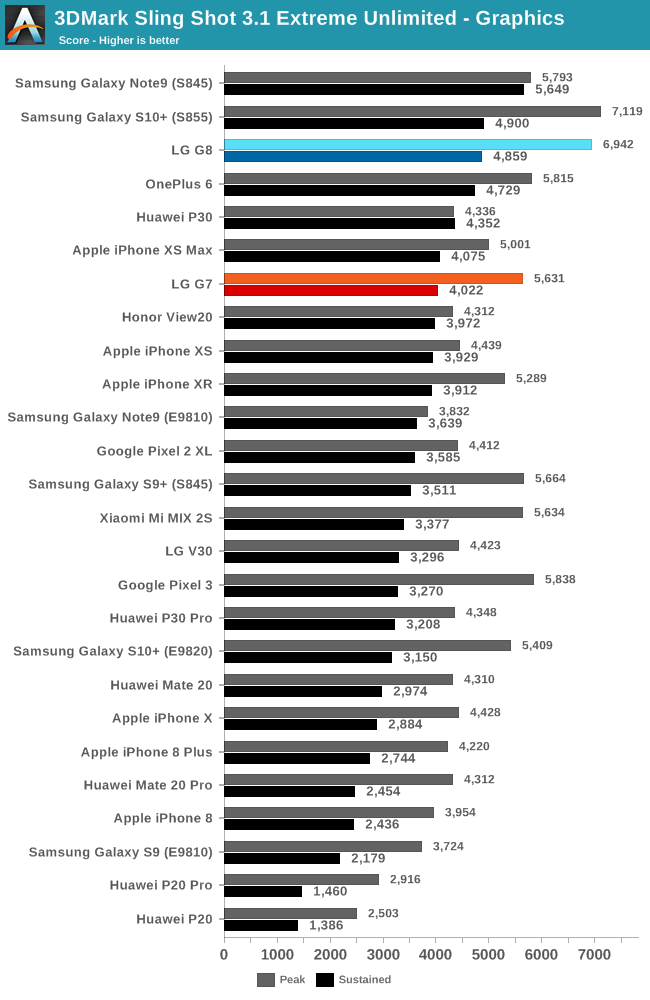
The graphics test puts the G8 in line with the S10+ - both showcasing excellent performance. The Note9 still leads here due to Samsung having extremely lax thermal constraints on that device, resulting in quite high skin temperatures in long sustained scenarios.
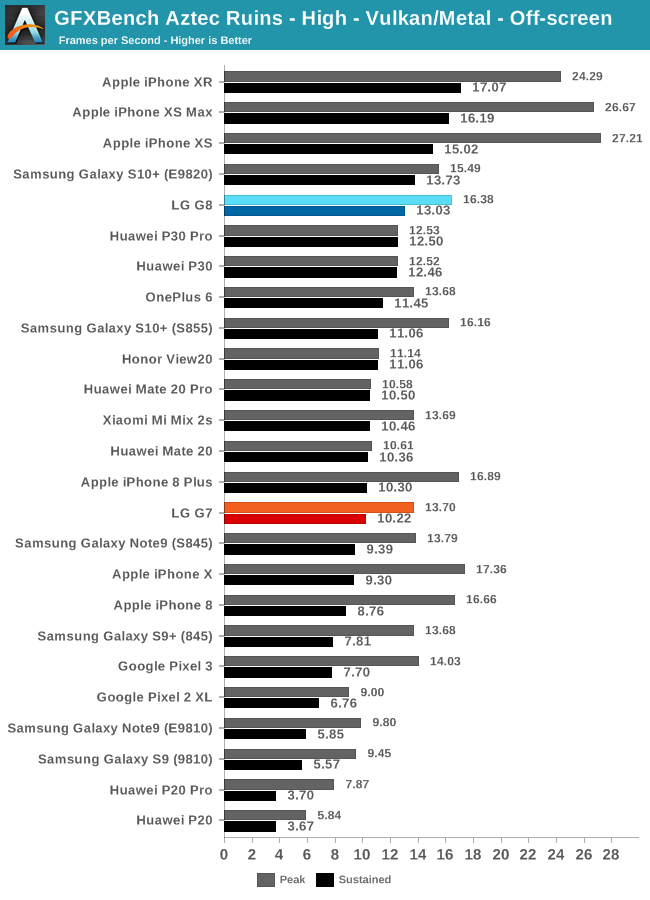
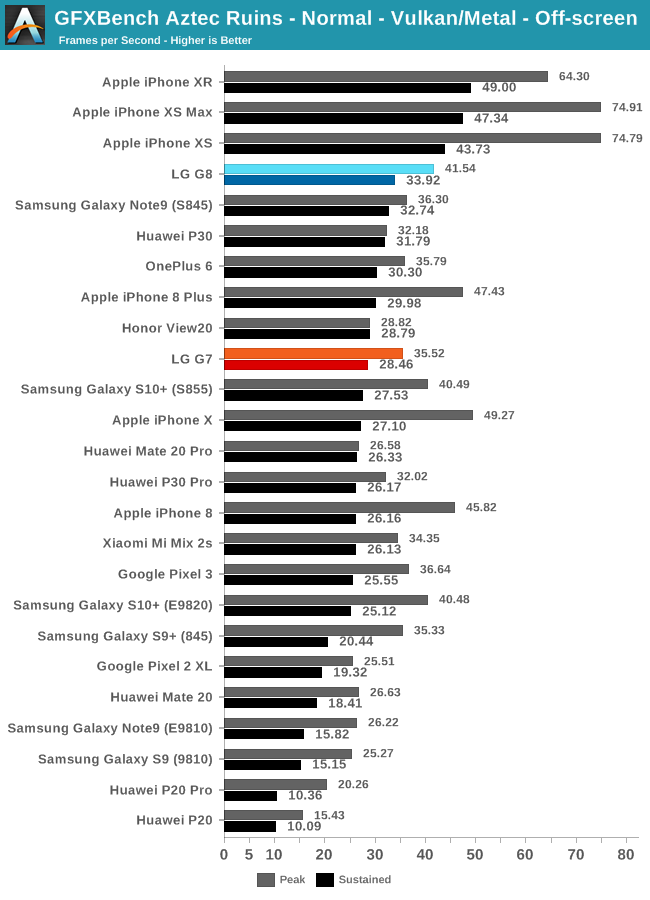
In both Vulkan Aztec tests the G8 also leads the S10+ in the sustained performance department, even though the absolute improvements over last year’s G7 aren’t very big.
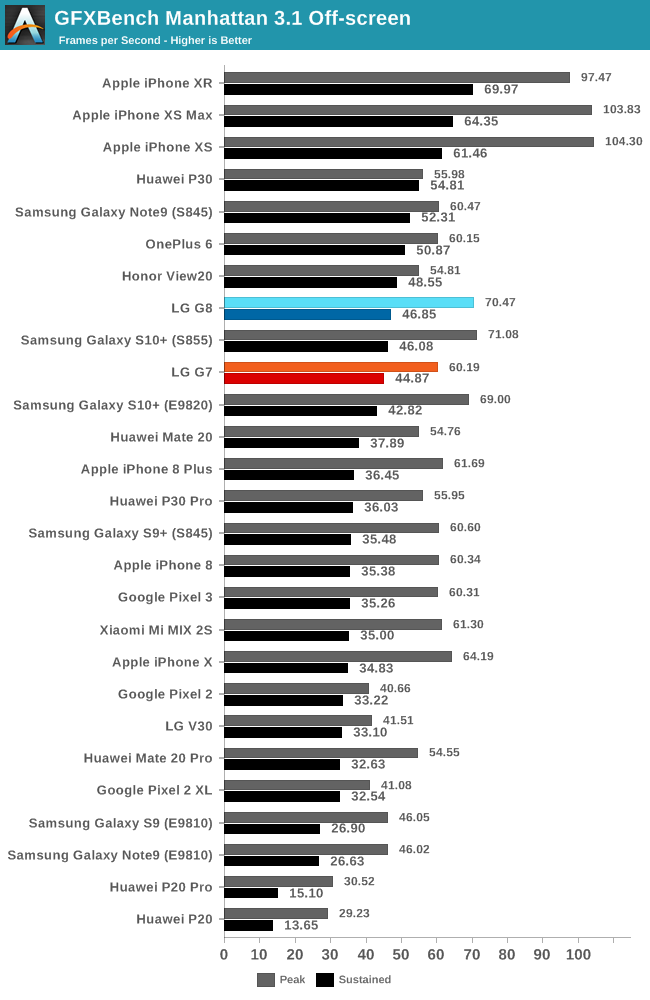
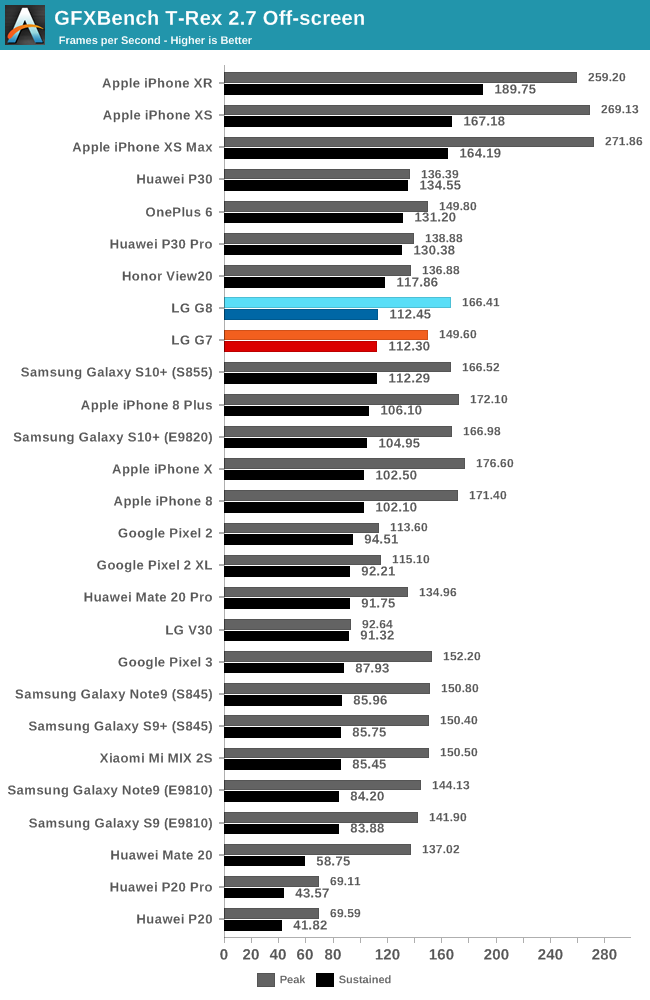
Finally, in Manhattan and T-Rex the G8 posts the most muted performance improvements over the G7, ending up almost identical sustained performance scores as last year’s phone. Here we also see the G8 tie with the Galaxy S10+.
Overall the GPU performance of the G8 and the Snapdragon 855 is very similar to that of the Galaxy S10+. The G8 is ahead of Samsung’s phone in some tests, which seems to be tied to more lax CPU thermal constraints. On other tests, the phone is pretty much in line with what we saw on the S10: conservative improvements over last year’s Snapdragon 845 phones such as the G7.
Display Measurement
As mentioned before, the G8 is a special device for LG as it represents the very first G-series phone which comes with an OLED screen. This is quite intriguing but also worrisome as the company hasn’t had a great track-record with OLED displays, suffering either from display quality issues or from power consumption issues.
For the new G8 to be considered a worthwhile consideration, it needs to get the display right. Thankfully, when it comes to the quality of the display panel (Uniformity), the phone doesn’t showcase any issues, which leaves display calibration as well as power consumption the remaining deciding factors.
As always, we thank X-Rite and SpecraCal, as our measurements are performed with an X-Rite i1Pro 2 spectrophotometer, with the exception of black levels which are measured with an i1Display Pro colorimeter. Data is collected and examined using SpectraCal's CalMAN software.
Compared to the G7’s LCD screen, one expected degradation from the move to an OLED screen is lower brightness levels, as the G7’s RGBW display showcased some class-leading display brightness reaching up to 1000 nits at 100% APL white.
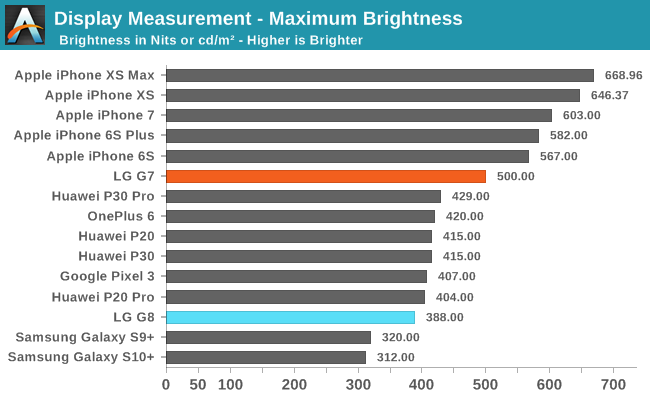
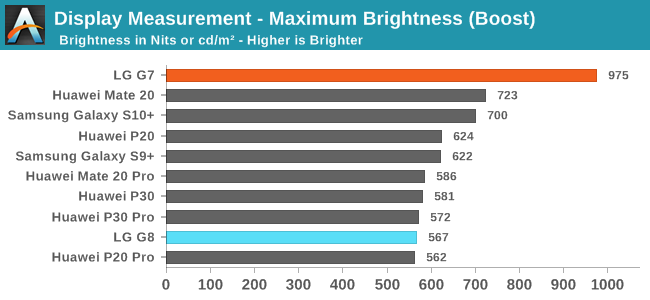
In manual maximum brightness, the G8 goes up to 388 nits when displaying full white, while when in bright conditions under the automatic mode the display boosts up to 567 nits. While per se the figures aren’t bad, the G8 does lag behind the newer Samsung S10 and also especially lags behind the G7’s incredibly high brightness levels.
In bright daylight situations I found the G8 to be acceptable, but not outstanding. It’s to be noted that LG scales brightness very aggressively with varying APL (average picture level), but even in lower APL levels the phone just isn’t as bright as competing devices.
In terms of display calibrations, LG offers a grand total of 7 different display modes, including “Auto”, “Cinema”, “Sports”, “Game”, “Photos”, “Web” and a more customisable “Expert”.
Among all of these, “Web” is the only sRGB gamut target display mode, while the “Cinema” mode seemingly targets a more accurate Display P3 profile. We’re limiting our evaluation to these two modes as they represent the most accurate modes on the G8.
Colour balance on the G8 unfortunately is a major issue, and although the “Web” profile showcases the best white-balance, it’s still veering off towards blues with a higher 6847K average CCT. The colour balance isn’t an issue of the profile but seemingly an issue of the calibration, as the display is able to showcase near perfect whites when at maximum brightness, with an ever increasing deviation the lower the brightness goes.
Gamma is also a major issue for the G8. At 200 nits, the phone is massively off-target with a 2.7 average gamma, with mid-levels exceeding 2.8, meaning tones appear darker than they should be. Again this issue is highly dependent on brightness as it’s not nearly as pronounced at maximum brightness.
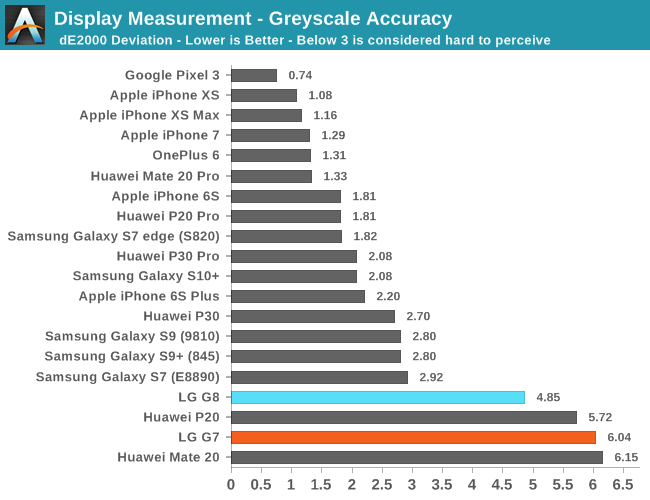
The end greyscale accuracy score for the G8 ends up at a measly DeltaE2000 of 4.85. While this is an improvement over the G7’s atrocious calibration, it’s still quite bad. This time around it’s not the colour balance that is the worst offender, but rather the massively off-mark gamma.
As mentioned, the “Web” profile is the only mode which offers a target gamut seemingly aiming for sRGB. However things are still quite off the mark here as it overshoots the gamut in the greens, and ever so slightly in the reds. What is again the key offender here isn’t this slightly larger-than-sRGB gamut, but rather the fact that the saturations are non-linear, showing some clear saturation compression which tends to oversaturate all levels.
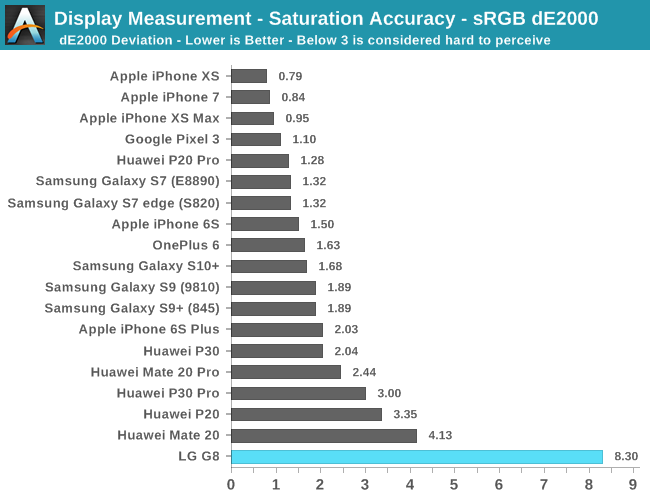
The resulting deltaE2000 is one of the worst we’ve ever measured, reaching 8.3 which is borderline unacceptable.
The “Cinema” mode offers the most accurate Display P3 gamut profile, and here again we’re seeing the same issues as on the “Web” profile. LG again overshoots the gamut in the greens, although this time doesn’t reach the target red levels. We see the same saturation compression issue with non-linear levels which means lower tone levels are just much too oversaturated.
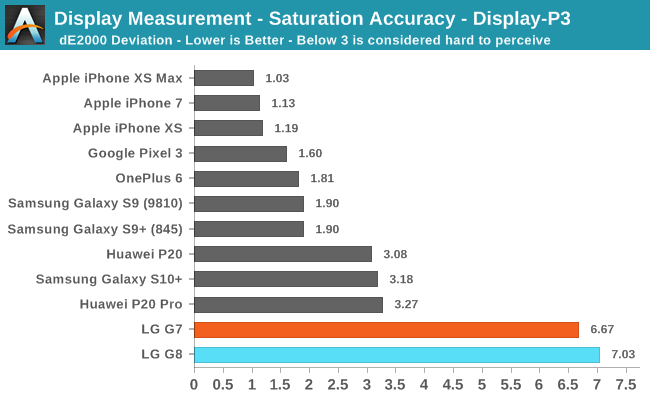
Here we have a comparison to the G7 (The phone didn’t have an sRGB mode), and shockingly it fares even slightly worse in terms of colour accuracy than last year’s disastrous result, with a dE2000 of 7.03.
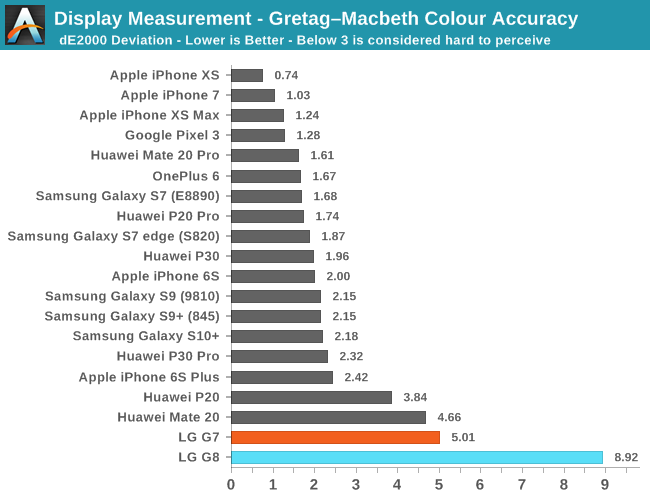
Finally, in our Gretag-Macbeth test of commonly found tones such as skin tones, the G8 is just an outright disaster. I would like to point out to the detailed dE2000 results of the individual tones which exceed 10 and some even reach values of up to 15.
While most tones aren’t too terrible in terms of their target hue, their saturation and luminosity (gamma) are completely off the mark.
The end result is a shameful dE2000 of 8.92, which I think is the worst display calibration we’ve ever measured on a phone. It’s to be noted that the measurements here are done in the “Web” profile, LG’s other profiles are even worse than this.
Overall Display Verdict
While the G8’s display has no issues in terms of uniformity and showcases great viewing angles, and its brightness levels is somewhat acceptable, the phone simply doesn’t have any accurate display mode.
I find it very odd that LG had introduced the new supposedly accurate “Web” profile in the V40 and G8, yet the company only did a half-hearted job in terms of actually making this an accurate display mode. The result is that the G8’s colours are consistently off-mark, with some of the worst calibration results we’ve ever seen in a smartphone.
Battery Life
The G7 didn’t have all too impressive battery life and the culprit here was the phone’s rather small 3000mAh battery as well as the very high base power consumption of the phone. The new G8 addresses the former issue with the inclusion of a new 3500mAh battery, however there’s still remaining concerns regarding the phone’s base power consumption.
The G8 seemingly continues to use LG’s own DDIC in the form of an SW43410, and this unit showcases the same issues as previous generation LG Display phones: The phone still idles at a black screen with a base power consumption of 580mW, which is extremely high and pretty atrocious.
Samsung with the new S10 generation seemingly moved on to a new process panel and DDIC generation as the phones base power consumption saw a significant reduction down to ~390mW. What this means for the G8 is although the battery is larger than the G7, we’re not really expecting the phone post very competitive battery results.
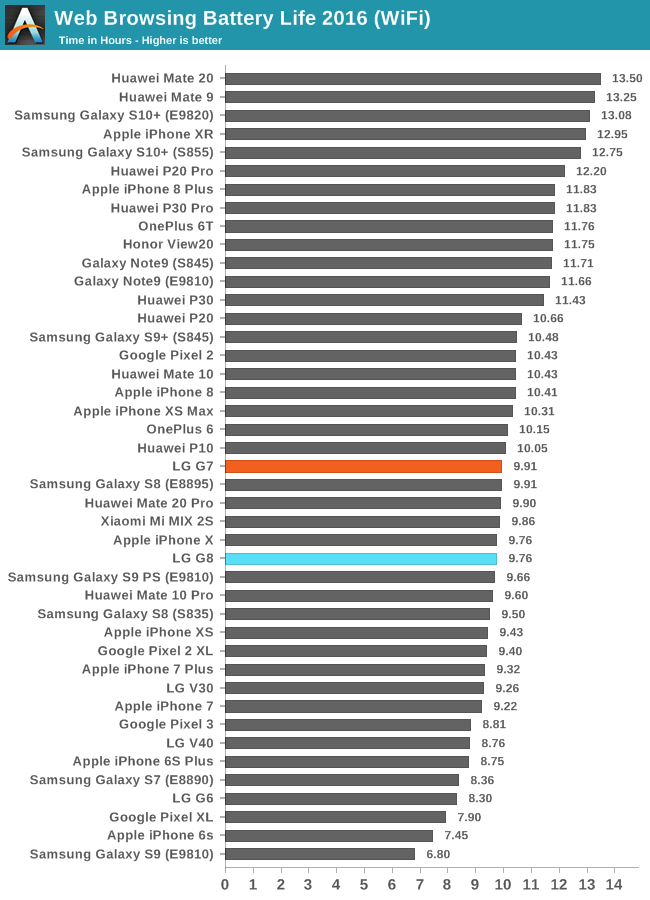
In the Web Browsing test, the G8 indeed slightly loses out to the G7 of last year. Even though the new phone has a bigger battery and more efficient SoC, it doesn’t help the phone as the new OLED panel is more power hungry than the G7’s LCD. For similar reasons and suffering from even high base power consumption, the LG V40 ended up with even more atrocious battery life results, among the worst of 2018’s devices.
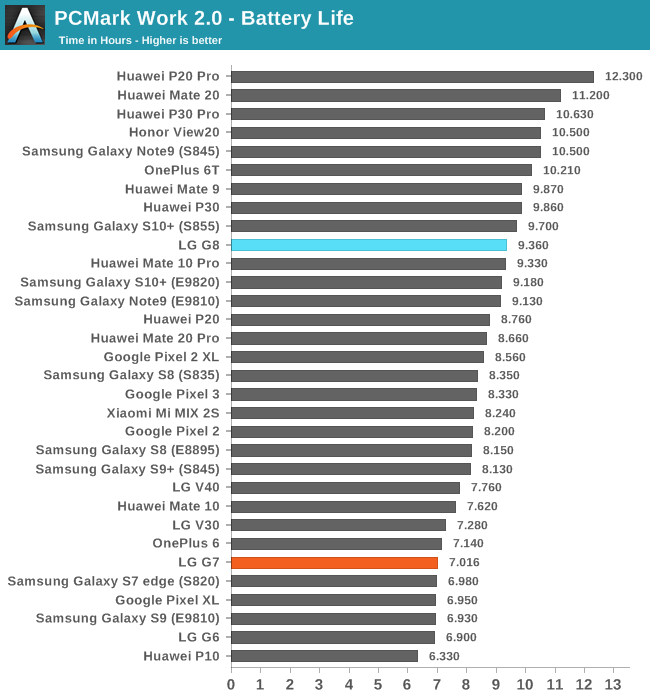
In PCMark the G8 fares better than the G7 and V40, however in absolute terms still lags behind the newer competition from Huawei and Samsung.
Overall, it’s massively disappointing to see LG struggle yet again in terms of battery life. I think we can now safely blame this on LG’s display panels and DDIC choices which have not improved over the last few generations, and rather have seen degradations in terms of power.
Camera - Daylight Evaluation
We move on to the G8’s camera. Again this is a controversial topic as it was one of the areas where the G7 last year failed quite terribly, particularly on the matter of post-processing where the phone’s camera kept applying needless noise-reduction filters which blurred out details and made things look like watercolour paintings.
The G8 needs to redeem itself not only in this regard, but also needs to compete with excellent new cameras from the competition.
Among the differenes between the G7 and G8 is that the new 12MP sensor and f/1.5 aperture lens module comes with a slightly wider viewing angle on the main camera. Also it will be interesting to see the differences between the V40 and G8 as both have the same module, but different SoCs which will impact processing results.
For this review, I’ll also be taking a better look at LG’s AI Cam mode as since the V40 this capture mode is more balanced in terms of the results and overall I’ve deemed it to be an overall benefit to the camera.
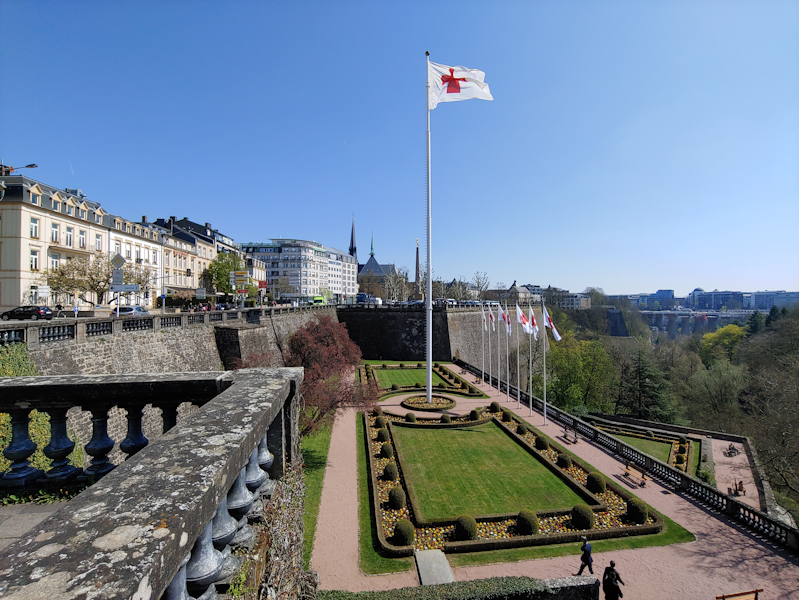
[ G8 ] - [ G7 ]
[ V40 ] - [ P30 Pro ]
[ P30 ] - [ P20 Pro ]
[ P20 ] - [ Mate 20 Pro ]
[ S10+ (S) ] - [ S10+ (E) ] - [ S9+ (S) ]
[ View20 ] - [ OnePlus 6T ] - [ Pixel 3 ] - [ iPhone XS ]
Starting off with the main camera, we see in this first scene that the G8 produces much better results than the G7 with significantly better dynamic range and detail. LG seems to have toned down the noise reduction in subsequent firmware updates to the G7 which was one of its worst behaviours.
The AI mode helps the a tad darker and unsaturated result of the Auto mode on the G8, but for this scene it’s not as dramatic a difference as seen on the V40. I actually like the V40’s AI mode here as it’s a better representation of the scene under a cloud-free sky with the bright sun. Both the G8 and V40 in this mode have nearly the same exposure time yet the V40’s processing brings out better dynamic range and contrast.
The G8’s competition here is clearly the Galaxy S10. The LG device has better saturations, however Samsung is able to bring out more shadow details, especially on the shadow-cast wall in the middle of the scene.
While LG has improved its usage of noise reduction, the G8 still evidently uses some, along with a combination of a sharpening filter. On some parts of the scene this works ok, but for example in the middle left trees this gives an unnatural sharpening to the foliage compared to the Galaxy S10.
Wide-angle shots on the G7 could be pretty terrible, and this is one scene where the G8 again improves dramatically in this regard, having much better colours, details and dynamic range.
Oddly enough, again the G8’s AI mode doesn’t produce as nearly nice results as the V40’s, which although lacks detail, has excellent colours and dynamic range contrast.
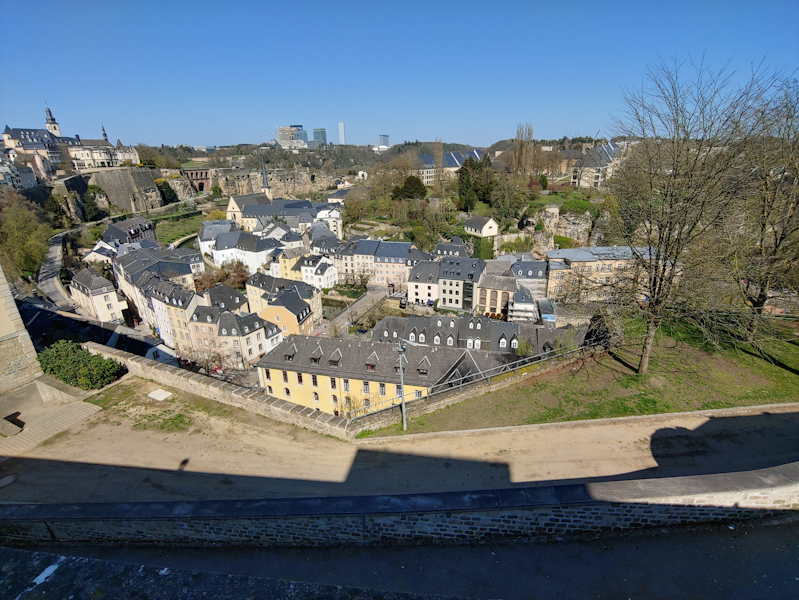
[ G8 ] - [ G7 ]
[ V40 ] - [ P30 Pro ]
[ P30 ] - [ P20 Pro ] - [ P20 ]
[ Mate 20 Pro ] - [ S10+ (S) ] - [ S10+ (E) ]
[ S9+ (S) ] - [ View20 ] - [ OnePlus 6T ]
[ Pixel 3 ] - [ iPhone XS ]
The next scene the difference between the G7 and G8 is night and day. The former phone’s histogram in this picture is just sad too look at as it avoids the last 10% completely while having most content dynamic range in the 5-50% levels, which is absurd considering this picture is captured in broad daylight. The G8 is just much better in capturing the proper highlights while still maintaining shadows correctly.
The AI mode brightens things even a little bit further, in an even better representation of the bright scene. I would say I prefer the G8’s shot here over the V40 as the latter compresses things a bit too much.
Again the G8 here competes with the S10, although again in terms of details it lags behind as its noise reduction and sharpening is too aggressive, losing out details such as the roof tiles in the first building from the bottom.
The wide-angle lens is again a major step-up compared to what we see on the G7. Unfortunately when it comes to detail on the wide angle, LG still very much lags behind Huawei and now Samsung.
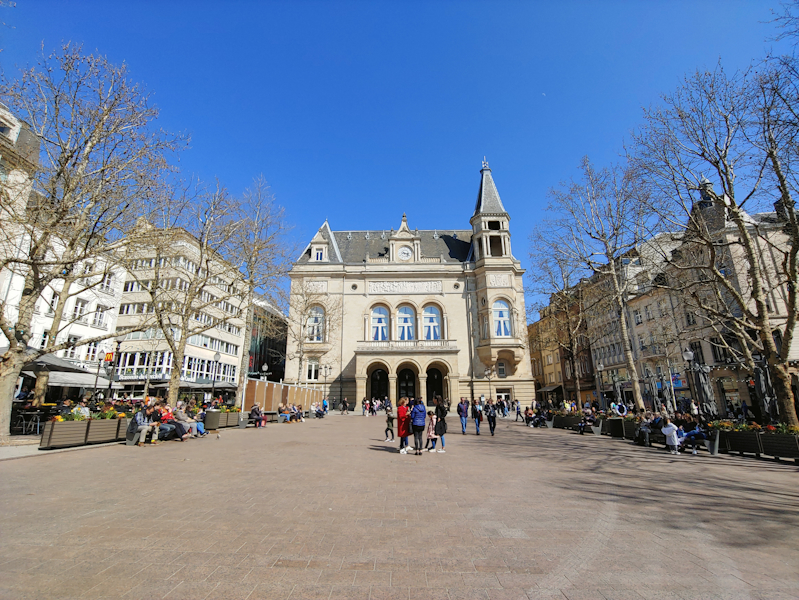
[ G8 ] - [ G7 ]
[ V40 ] - [ P30 Pro ]
[ P30 ] - [ P20 Pro ] - [ P20 ]
[ Mate 20 Pro ] - [ S10+ (S) ] - [ S10+ (E) ]
[ S9+ (S) ] - [ View20 ] - [ Pixel 3 ] - [ iPhone XS ]
Although the G8 has less resolution than the G7, its camera actually has the better spatial resolution when it comes to details, and in this scene it’s evident that it’s not just a matter of the post-processing.
The differences between the G8 and V40 are more nuanced, and I like the new phone’s better preservation of highlights. The G8 is ahead in terms of colours and exposure, however it again lags behind in detail to the Galaxy S10.
In terms of the wide angle, this shot wasn’t great for any of the LG phones. Particularly the texture of the pavement on the G8 is quite terrible when compared to what Huawei and Samsung are producing.
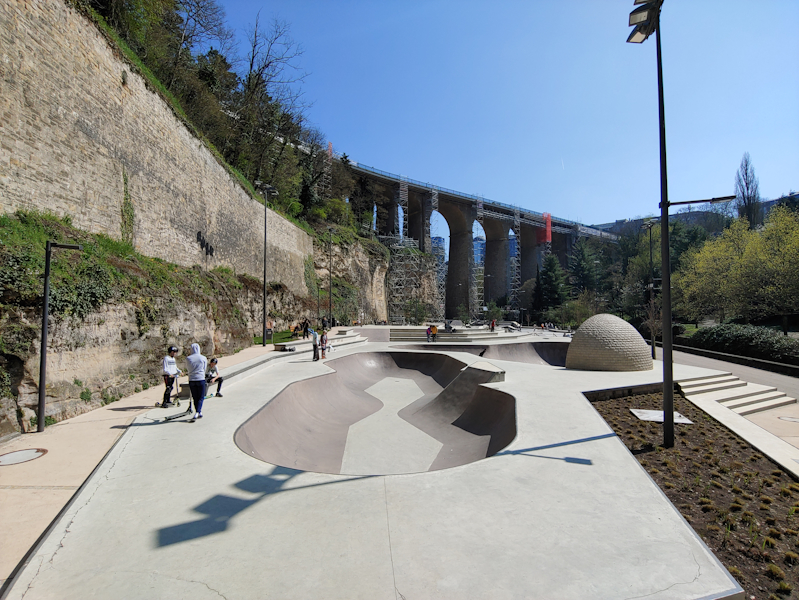
[ G8 ] - [ G7 ]
[ V40 ] [ P30 Pro ] - [ P30 ]
[ P20 Pro ] - [ P20 ]
[ Mate 20 Pro ] - [ S10+ (S) ] - [ S10+ (E) ]
[ S9+ (S) ] - [ View20 ] - [ OnePlus 6T ]
[ Pixel 3 ] - [ iPhone XS ]
On the main camera, the G8’s AI mode here happens to capture a nearly identical composition to the S10 even though the latter’s exposure is twice as long because of the f/2.4 aperture in bright scenarios. I like the G8’s colours more, however details again seem to go to Samsung.
This is again as scene where the V40’s HDR processing is a lot more aggressive which results in toned down highlights, while the G8 preserves them better.
Exposure on the wide angle is very good on the G8 however again can’t compete in terms of detail to Huawei and Samsung.
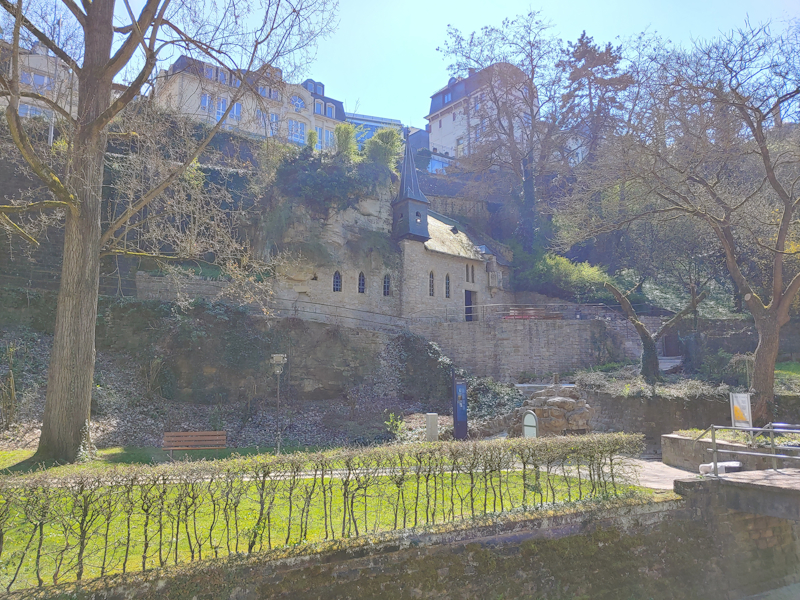
[ G8 ] - [ G7 ]
[ V40 ] [ P30 Pro ]
[ P30 ] - [ P20 Pro ] - [ P20 ]
[ Mate 20 Pro ] - [ S10+ (S) ]
[ S10+ (E) ] - [ S9+ (S) ] - [ View20 ] - [ OnePlus 6T ]
[ Pixel 3 ] - [ iPhone XS ]
This shot is quite hard on the cameras as it’s captured against the sun. Nevertheless, some phones manage to produce good results, however the LG phones all fail at the scene. The G8 isn’t able to maintain a black point and has no levels at all below 30% which results in a washed out image lacking contrast.
We see a similar issue on the wide-angle, with no levels below ~15%. Both the G8 and V40 showcase almost identical lens flares, pointing out to lesser quality optics and anti-reflection coatings on the lenses than say Huawei’s wide angle modules.
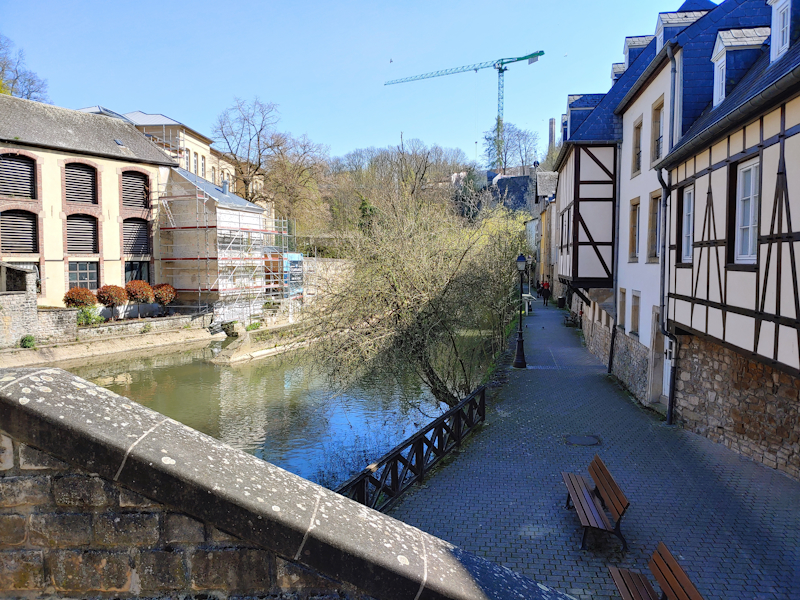
[ G8 ] - [ G7 ]
[ V40 ] [ P30 Pro ] - [ P30 ]
[ P20 Pro ] - [ P20 ] - [ Mate 20 Pro ]
[ S10+ (S) ] - [ S10+ (E) ] - [ S9+ (S) ]
[ View20 ] - [ OnePlus 6T ] - [ Pixel 3 ] - [ iPhone XS ]
In the last scene here again the G8 represents big improvements over both the G7 and V40, with better details and dynamic range and accurate colour balance.
The wide angle yet again is good in terms of its composition, however the details are still only about as good as a camera half of its resolution.
Camera - Daylight Evaluation: Dynamic Range & Detail
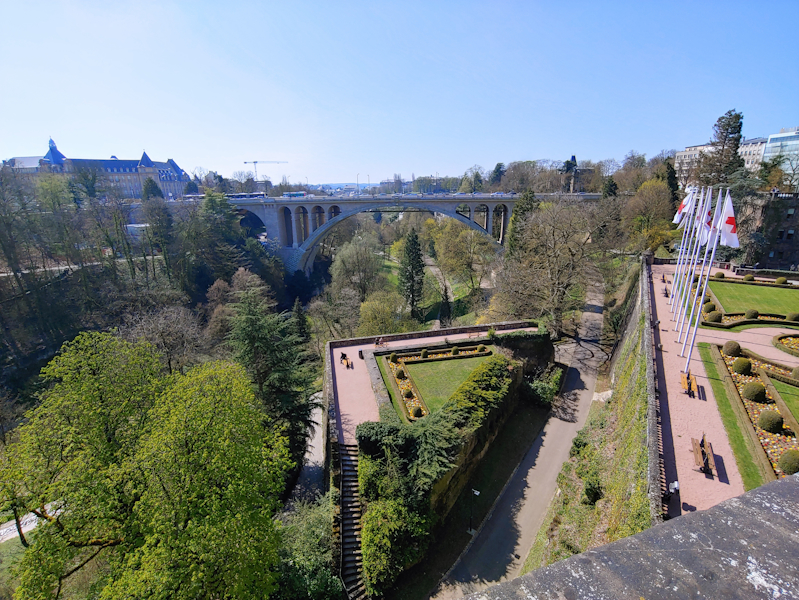
[ G8 ] - [ G7 ]
[ V40 ] - [ P30 Pro ]
[ P30 ] - [ P20 Pro ]
[ P20 ] - [ Mate 20 Pro ] - [ S10+ (S) ]
[ S10+ (E) ] - [ S9+ (S) ] - [ View20 ]
[ OnePlus 6T ] - [ Pixel 3 ] - [ iPhone XS ]
In this shot the G8 produces a good result, however it feels rather washed out and lacking contrast. The phone has trouble getting a good black point and thus some shadows that are supposed to be black become grey with a blue veil. We can note huge processing differences between the G8 and V40, and again the phone is a huge jump to the G7.
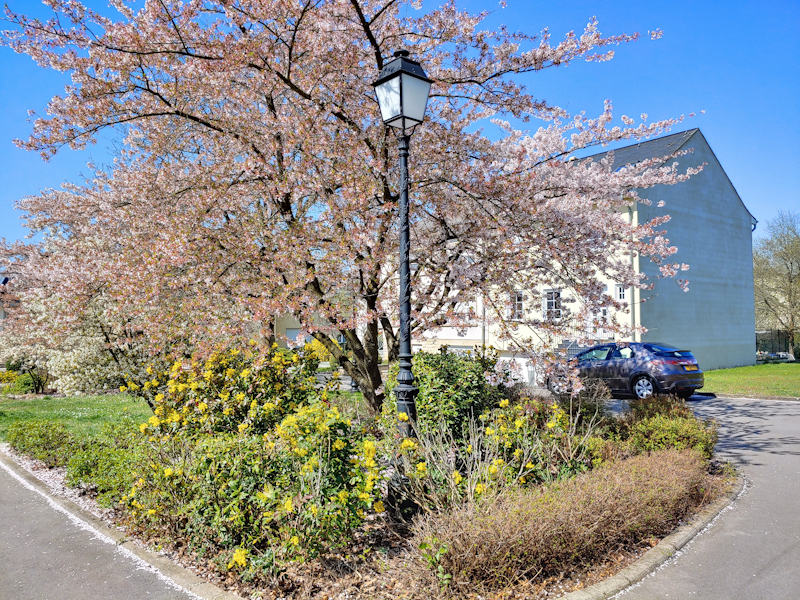
[ G8 ] - [ G7 ]
[ V40 ] [ P30 Pro ]
[ P30 ] - [ P20 Pro ] - [ P20 ]
[ Mate 20 Pro ] - [ S10+ (S) ]
[ S10+ (E) ] - [ S9+ (S) ] - [ View20 ]
[ OnePlus 6T ] - [ Pixel 3 ] - [ iPhone XS ]
Again this next shot is just a huge improvement for LG. Compared to the G7 we have significantly better details and exposure, while compared to the V40 the G8 produces much better colour balance.
On the wide angle, the V40’s HDR in AI mode produces a better composition. Details are a known story – LG lags behind the competition.
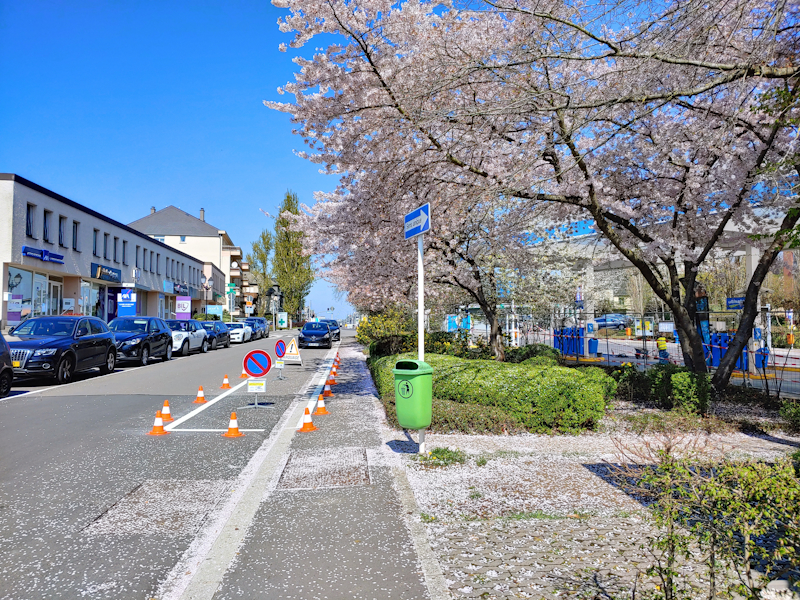
[ G8 ] - [ G7 ] - [ V40 ]
[ P30 Pro ] - [ P30 ]
[ P20 Pro ] - [ P20 ] - [ Mate 20 Pro ]
[ S10+ (S) ] - [ S10+ (E) ] - [ S9+ (S) ]
[ View20 ] - [ OnePlus 6T ] - [ Pixel 3 ] - [ iPhone XS ]
This shot is again very interesting for the G8. The exposure and composition is again great with fantastic dynamic range, a massive jump from the G7. I actually find the result among the best among the tested phones, which is impressive.
There’s one odd thing in this shot: the red colour of the no parking sign. For some reason both the V40 and G8 have issues with tone mapping this very saturated red and it seems to clip beyond the gamut of the sensor, resulting in quite the muddy red.
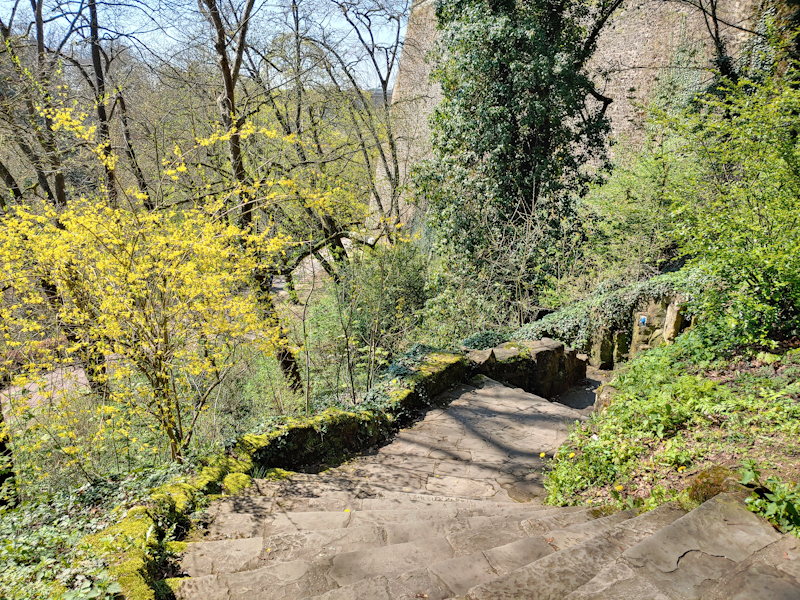
[ G8 ] - [ G7 ] - [ V40 ]
[ P30 Pro ] - [ P30 ]
[ P20 Pro ] - [ P20 ]
[ Mate 20 Pro ] - [ S10+ (S) ]
[ S10+ (E) ] - [ S9+ (S) ] - [ View20 ]
[ OnePlus 6T ] - [ Pixel 3 ] - [ iPhone XS ]
LG here continues to show its strength in the new sensor and processing of the G8. The resulting shot is in my opinion again one of the best of the lineup as it manages to capture the brightness of the scene yet still maintaining good amount of contrast and proper highlights and blacks.
The wide angle has similarly great composition, with the familiar issue of blurred details.

[ G8 ] - [ G7 ] - [ V40 ]
[ P30 Pro ] - [ P30 ] - [ P20 Pro ]
[ P20 ] - [ Mate 20 Pro ] - [ S10+ (S) ]
[ S10+ (E) ] - [ S9+ (S) ] - [ View20 ]
[ OnePlus 6T ] - [ Pixel 3 ] - [ iPhone XS ]
Finally in this shot again LG manages to hit correct colour balance without issues. Exposure maximises dynamic range of the shot, with great highlights as well as shadows.
Daylight Capture Conclusion
Overall, I was very impressed with the new main camera performance of the G8. LG has managed to massively improve over the G7 and V40 and processing has seen a big jump in quality.
While on the G7 I might have ignored the new AI Cam mode, and on the V40 sometimes it can be a miss, I almost never found a shot on the G8 where the AI Cam produced shots which were any worse than the auto mode. On the contrary, I found the AI Cam mode in general to produce better exposures.
LG’s noise reduction and sharpening is still a tad more aggressive than other vendors and still lags behind in this regard, however it’s a big improvement for the main sensor.
For the wide angle, while the G8 again improves on exposure and composition, for whatever reason LG still massively lags behind in terms of detail. This should be a processing issue on LG’s part and nothing inherent to the hardware. However since Huawei and Samsung have introduced wide-angle modules, it means that this feature is no longer an LG only exclusive feature, and both of the aforementioned vendors beat LG in terms of the quality of the wide angle shots, which is a shame for the G8.
Overall, I was very happy with the daylight capture of the G8, especially the main camera.
Camera - Low Light Evaluation
Low-light for the LG G8 should be straightforward: Muted expectations. Although the hardware of the new phone has promises due to the new 12MP 1.4µm sensor and an f/1.5 aperture lens, the competition in the last year in low-light photography has become incredibly fierce, with Huawei and Google leading the pack in terms of class-leading computational photography.
As LG and the G8 still lack such features, we’re expecting average results in line with what other phones such as the Galaxy S10 are able to produce.
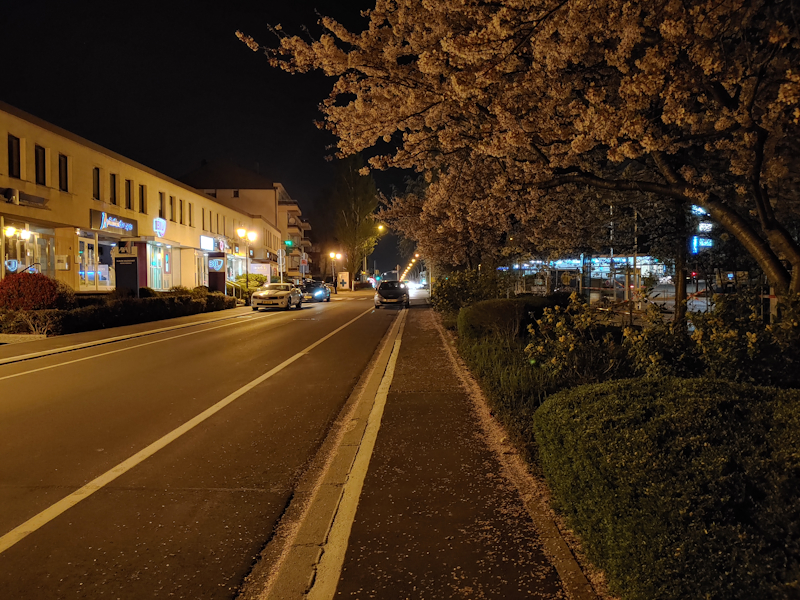
[ G8 ] - [ G7 ] - [ V40 ]
[ P30 Pro ] - [ P30 ]
[ P20 Pro ] - [ P20 ] - [ Mate 20 Pro ]
[ S10+ (S) ] - [ S10+ (E) ] - [ S9+ (S) ]
[ View20 ] - [ OnePlus 6T ] - [ Pixel 3 ] - [ iPhone XS ]
As expected, the G8 isn’t able to match the light capture of Huawei’s flagships nor Google’s Night Sight mode. However the results are still surprising against the other devices. Naturally the phone is leaps ahead of the G7, but more interestingly, it also produces quite different results than the V40. The V40 is a lot brighter even though it has the shorter exposure. Oddly enough the EXIF on the V40 claims ISO0 while the G8 is at ISO500. While overall I prefer the brighter results of the V40, the G8 is much sharper.
Low-light for the wide-angle modules is extremely tough and the results aren’t any good other for sharing lower resolution shots on social media, as they completely lack detail.

[ G8 ] - [ G7 ] - [ V40 ]
[ P30 Pro ] - [ P30 ]
[ P20 Pro ] - [ P20 ] - [ Mate 20 Pro ]
[ S10+ (S) ] - [ S10+ (E) ] - [ S9+ (S) ]
[ View20 ] - [ OnePlus 6T ] - [ Pixel 3 ] - [ iPhone XS ]
Again besides Huawei and Google, the G8 surprises as it manages to surpass Samsung’s Galaxy S10 in this shot both on the main as well as wide-angle shots with both a brighter as well as sharper picture. Looking at the EXIF, the G8 has a 3x longer exposure compared to the S10.

[ G8 ] - [ G7 ] - [ V40 ]
[ P30 Pro ] - [ P30 ] - [ P20 Pro ] - [ P20 ]
[ Mate 20 Pro ] - [ S10+ (S) ] - [ S10+ (E) ] - [ S9+ (S) ]
[ View20 ] - [ OnePlus 6T ] - [ Pixel 3 ] - [ iPhone XS ]
The next shot things are about more evened out between the different smartphones. The G8 has much better shadow detail than the G7, however the V40’s higher ISO ends up producing a brighter picture.
Camera - Extreme Low-Light Evaluation
Moving on to extreme low-light conditions, these are scenarios we traditionally didn’t expect smartphones cameras to be effective at all. Most phones here will produce a dark image and are at their limit in terms of light capture. To be able to perform here, you need help of specialised sensors or sneaky computational photography.
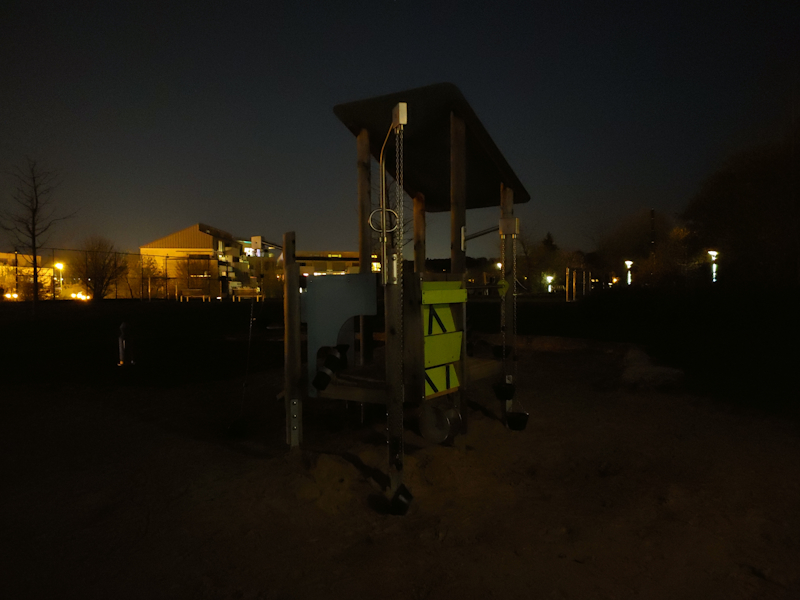
[ G8 ] - [ G7 ] - [ V40 ]
[ P30 Pro ] - [ P30 ] - [ P20 Pro ] - [ P20 ]
[ Mate 20 Pro ] - [ S10+ (S) ] - [ S10+ (E) ] - [ S9+ (S) ]
[ View20 ] - [ OnePlus 6T ] - [ Pixel 3 ] - [ iPhone XS ]
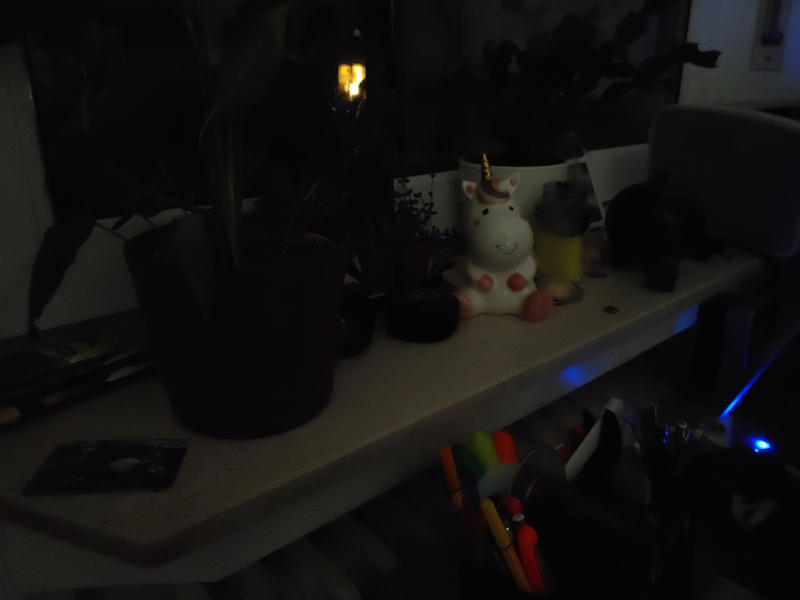
[ G8 ] - [ G7 ] - [ V40 ] - [ P30 Pro ]
[ P30 ] - [ P20 Pro ] - [ P20 ]
[ Mate 20 Pro ] - [ S10+ (S) ] - [ S10+ (E) ] - [ S9+ (S) ]
[ View20 ] - [ OnePlus 6T ] - [ Pixel 3 ] - [ iPhone XS ]
--
Unfortunately for the G8, even the pixel-binning low-light shot mode doesn’t help it too much as it can’t compete with either Huawei or Google. In terms of capturing anything of value, the G8’s lack of even a basic night mode also lets it fall behind the Galaxy S10 in extreme low-light.
Low-Light Evaluation Conclusion
Overall, the G8’s low-light capture is good when compared to the classical phone cameras such as Samsung’s. However Huawei and Google have both massively raised the bar in terms of computational photography to the point that we can’t objectively say that phones such as the G8 are able to viably compete. As the industry shifts more and more towards such solutions, LG needs to get on board and offer a similar camera mode in order to compete.
Video Recording
Video recording on the LG G8 is a straightforward matter. Videos are recorded in AVC/H.264 format as seemingly the camera app doesn’t allow for a switch to HEVC/H.265. Nevertheless , the resulting is very high bitrate with 24Mbps 1080p60 videos, 48Mbps 4K30 and 64Mbps 4K60 video.
60fps video recording works only on the main camera sensor and 4K60 recording doesn’t have EIS.
Quality in 4K recording is great. Particularly 4K30 on the wide camera sensor with EIS results is a great experience. 60fps recording at 1080p seems to be a compromise in terms of quality as I feel the bitrate isn’t high enough, resulting in a lot of loss of detail.
Finally 4K60 looks great, however the lack of EIS is immediately visible as things become extremely shaky. The lack of HEVC recording in this mode is also of a major concern as the resulting 54 second clip above results in a 421MB file – very quickly filling up your internal storage.
One disappointing aspect of the video recording was the audio recording. The audio wasn’t very clear and it really sounded as if recorded within a box, with the microphone picking up even the slightest amount of wind.
Speaker Evaluation
The speakers on the G8 are interesting. LG continues to advertise the “Boombox” feature of the main speaker design, which means that the phone has a large internal reverberation volume. This results in the back cover vibrating quite a lot with audio, but also has the benefit that when placing the phone on a flat surface it’ll amplify the sound significantly.
Also new on the G8 is the secondary “earpiece” which isn’t a traditional speaker. Instead, LG went with an under-screen piezoelectric exciter which vibrates the screen assembly, which in turn acts a speaker membrane. For the G8, this new speaker also acts as the left stereo speaker for audio, fixing one of the most major shortcomings of the G7’s mono speaker design.
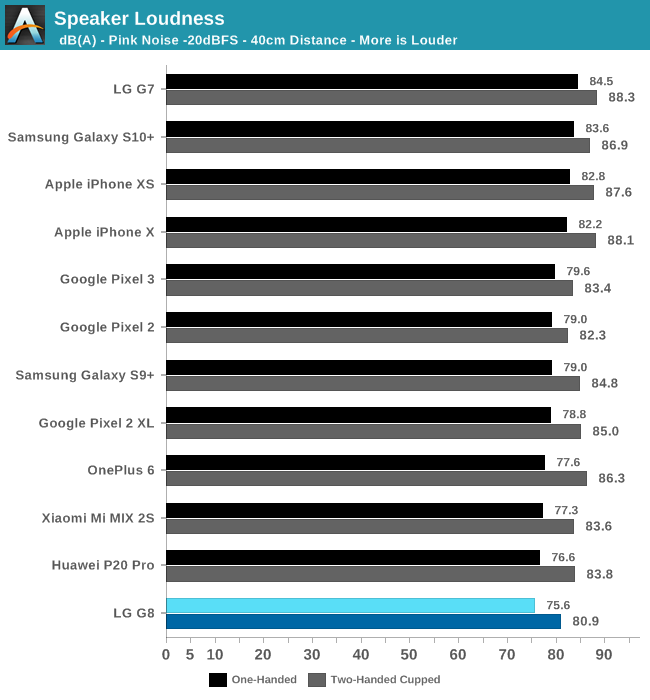
In terms of maximum volume, we’re measuring pink noise while holding the phone both one-handed and also when holding it two-handed with cupped palms from a 40cm distance. This should represent the two most common use-cases for smartphone speakers.
Unfortunately, the G8 doesn’t get nearly as loud as its predecessor, showcasing one of the lowest maximum volume measurements of recent flagships. The phone is still able to somewhat maintain good frontal directionality as the delta between one-handed and two-handed measurements is in line with most phones at ~5dB, although Samsung’s new Galaxy S10 sets the bar at a mere 3.3dB
To test and showcase the new stereo separation of the new stereo speaker setup, I setup a volume measurement with help of a binaural recording rig. The phone is at a 40cm distance for the recording:
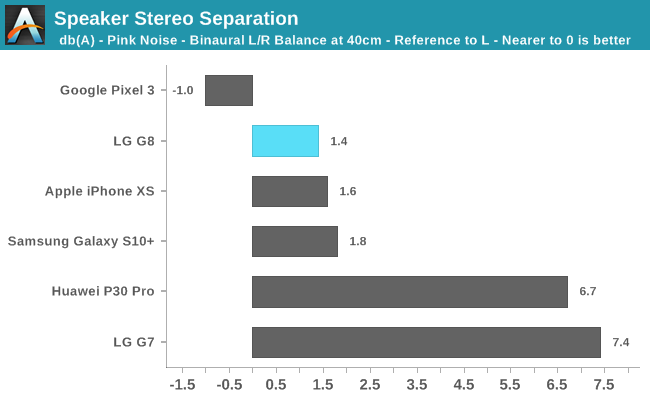
Here, we see the clear difference between phones with stereo and mono speakers. In particular, the G8 is able to massively improve over the G7, and this creates a much better listening experience. It’s to be noted that most phones still have a slight volume bias towards the right main speaker, with the Pixel 3 being the exception where the earpiece unit sounds louder than the bottom front speaker.
While in terms of stereo playback the G8 represents a big jump over the G7, the quality of the audio still very much lags behind the competition. While the G8’s speakers aren’t bad, they’re somewhat still prone to distortions at the highest volume levels. More importantly, Samsung’s S10 has much better bass, low-ends, and high-end treble than the G8, resulting in significantly better clarity.
Nevertheless, the G8’s speaker system is a good improvement over its predecessor. I was particularly surprised how well the under-screen speaker worked, even though again it’s just not as good as a proper powerful earpiece design. I wonder if LG would be able to shift the unit further up the phone, as currently it sits below the level of the rear cameras. One thing however is for sure: LG needs to improve its speaker audio processing as the competition has shown just how much better one can make speakers sound through software alone.
Conclusion & End Remarks
The G8 from the get-go wasn’t advertised to be a very exciting phone. LG’s devices in the past few years not only had trouble with differentiating themselves, but rather also had trouble with actually delivering on some of the basics of what makes a smartphone, such as display, cameras, and battery life. The G8 here didn’t need to be exciting or even innovative for that matter, LG just needed a phone that simply delivered on the basics.
In terms of the exciting stuff, LG’s main differentiating feature for the phone is the new ToF sensor and the corresponding gesture-based navigations and controls. While I didn’t cover these in detail for these review, the reason for that is simply that I found them to be overall gimmicky and generally useless in terms of experience. I can see some edge-cases where they would be useful, such as when cooking or other scenarios where you have dirty hands, but other than that it’s simply easier and faster to just use the buttons or touch the screen. Although LG’s features are gimmicky, at least they’re in my opinion at least the best attempt of making practical use of the new ToF sensor technology, so at least some credit is due in this regard.
But again, the G8 didn’t even need to differentiate itself with such features, it needed to deliver on the basics. So did LG manage this time around?
In terms of design, the G8 is an evolution of what we saw on the G7. The new phone maintains the same form-factor as its predecessor, while refining several aspects of the design. The new phone for one is a bit thicker and a little bit heavier, and the frame of the phone is thicker. For a phone of its size, the ergonomics still work out, albeit the design feels dated for 2019.
The screen of the G8 is inarguably the biggest change for the phone. The switch from LCD to an OLED panel definitely improves the contrast and viewing angles of the phone, however there are compromises compared to the G7, such as a reduction in screen brightness which is no longer class-leading.
The most disappointing aspect of the G8’s display is its calibration. In the past we’ve heard from LG that they deemed that punchy colours are preferred by users. It’s a fair enough reason, however with the introduction of a more accurate “Web” display mode we had hopes that LG would finally introduce an accurate profile. Unfortunately the new mode largely remains a mess. Colour saturation is all over the place, the mode doesn’t correctly adhere to the target gamut, and most annoyingly the gamma is just way off, resulting in darker colour tones. In the end the G8 ended up as one of the worst calibrated devices we’ve ever measured. If you value or are sensitive to colour accuracy, forget about the G8.
One aspect where the G7 and the V40 displays also largely lagged behind was the base power consumption. Unfortunately again, the G8 doesn’t improve in this regard as it showcases the same disappointing high power drain as on the G7. While the situation is not as bad as on the V40, the end result is that even though the phone has a bigger battery capacity and more efficient SoC, it doesn’t last as long as the G7 in our web browsing battery test. While in PCMark the G8 does manage to get back a more meaningful gain, it’s still overall a bit short of what we expected.
Performance was a big negative for the G8. Even though the Snapdragon 855 SoC should be able to perform excellently, the phone’s BSP and software isn’t as refined and tuned as what we find on the Galaxy S10. In fact, the G8 seemingly lacks some boosting mechanism that resulted in the phone actually feeling slower than the G7 in everyday scenarios such as switching apps or views within apps. This really shouldn’t be acceptable of a phone that prides itself in using the latest flagship SoC.
The cameras on the G8 are a major improvement for LG. Particularly the main camera sensor as well as processing holds up against the very best in the market, sometimes actually with the G8 leading. Particularly LG’s exposure, dynamic range and colour balance always seemed to be on point and the AI Cam in general should be the default capturing mode for most scenarios. LG still lags behind other vendors when it comes to details and it's still arguable if there's any benefits to some of the sharpening processing.
The wide angle module, while again an improvement over the G7 and the V40 (Thanks to better exposure algorithms), still very much suffers from massive lack of details and seemingly blurred processing. It’s a pity that LG didn’t manage to fix this issue, and now Huawei and Samsung have both surpassed LG on its own turf.
Today’s smartphone low-light photography capabilities can be divided into two groups: Huawei and Google, and everybody else. So even though the G8’s camera does well in low-light, it firmly belongs to the latter group and can’t really compete with the top of the line low-light capture ability.
Finally, an innovative feature of the G8 is the new under-screen speaker. I was actually surprised how well it works, and it’s definitely a big improvement over the G7’s mono speaker. But in the end, it’s still no match for a real and more powerful earpiece speaker.
In the end, did the G8 deliver on the basics? In some regards, yes, while in others the G8 is still very much a compromise of a phone. LG has improved a lot on the camera and speakers. On the display side of things, the G8 is an improvement on paper but in practice it fails short. Battery life has improved in some regards, but if you tend to use your phone a lot in higher brightness levels the G8 will seem like a downgrade.
I think the most important conclusion for the G8 is that it really isn’t able to convince me buying it over say a Galaxy S10. The latter has a better screen, better battery life, better cameras (You don’t need a Korean version to have triple-cameras), better speakers, better software, and better performance.
In the US, the G8’s official unlocked MSRP comes in at $849, which I find to be simply unjustifiable. Some carriers such as T-Mobile offer it a lower $619 price point which represents a lot more reasonable purchase. If you’re able to get the phone at the lower price point and willing to live with some of the aforementioned compromises, then the G8 should be a good phone for you – it’s just not a great phone.

